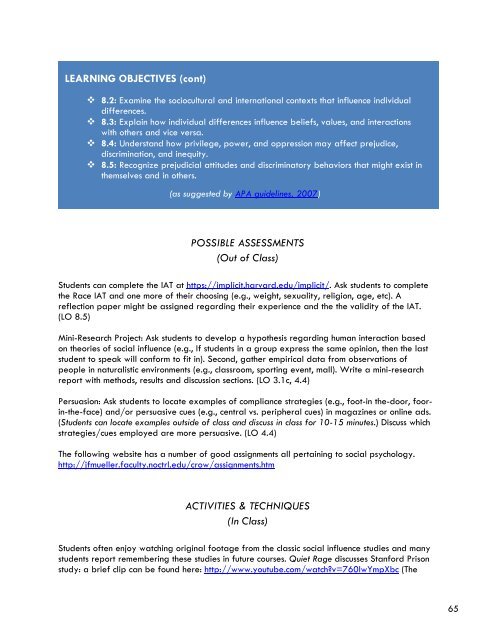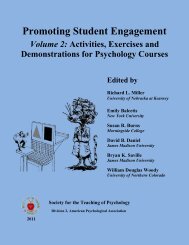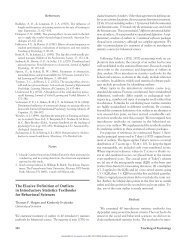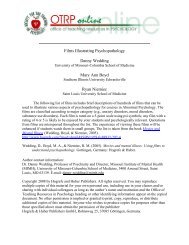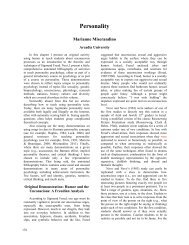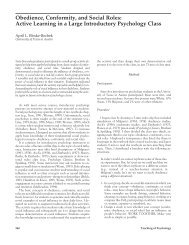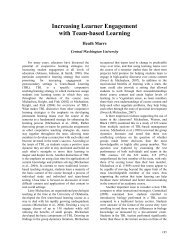INTRODUCTORY PSYCHOLOGY TEACHING PRIMER Early Career ...
INTRODUCTORY PSYCHOLOGY TEACHING PRIMER Early Career ...
INTRODUCTORY PSYCHOLOGY TEACHING PRIMER Early Career ...
You also want an ePaper? Increase the reach of your titles
YUMPU automatically turns print PDFs into web optimized ePapers that Google loves.
LEARNING OBJECTIVES (cont)<br />
8.2: Examine the sociocultural and international contexts that influence individual<br />
differences.<br />
8.3: Explain how individual differences influence beliefs, values, and interactions<br />
with others and vice versa.<br />
8.4: Understand how privilege, power, and oppression may affect prejudice,<br />
discrimination, and inequity.<br />
8.5: Recognize prejudicial attitudes and discriminatory behaviors that might exist in<br />
themselves and in others.<br />
(as suggested by APA guidelines, 2007)<br />
POSSIBLE ASSESSMENTS<br />
(Out of Class)<br />
Students can complete the IAT at https://implicit.harvard.edu/implicit/. Ask students to complete<br />
the Race IAT and one more of their choosing (e.g., weight, sexuality, religion, age, etc). A<br />
reflection paper might be assigned regarding their experience and the the validity of the IAT.<br />
(LO 8.5)<br />
Mini-Research Project: Ask students to develop a hypothesis regarding human interaction based<br />
on theories of social influence (e.g., If students in a group express the same opinion, then the last<br />
student to speak will conform to fit in). Second, gather empirical data from observations of<br />
people in naturalistic environments (e.g., classroom, sporting event, mall). Write a mini-research<br />
report with methods, results and discussion sections. (LO 3.1c, 4.4)<br />
Persuasion: Ask students to locate examples of compliance strategies (e.g., foot-in the-door, foorin-the-face)<br />
and/or persuasive cues (e.g., central vs. peripheral cues) in magazines or online ads.<br />
(Students can locate examples outside of class and discuss in class for 10-15 minutes.) Discuss which<br />
strategies/cues employed are more persuasive. (LO 4.4)<br />
The following website has a number of good assignments all pertaining to social psychology.<br />
http://jfmueller.faculty.noctrl.edu/crow/assignments.htm<br />
ACTIVITIES & TECHNIQUES<br />
(In Class)<br />
Students often enjoy watching original footage from the classic social influence studies and many<br />
students report remembering these studies in future courses. Quiet Rage discusses Stanford Prison<br />
study: a brief clip can be found here: http://www.youtube.com/watch?v=760lwYmpXbc (The<br />
65


